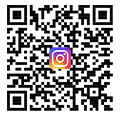We have introduced that textile fabrics are divided into three categories according to different processing methods: woven fabrics, knitted fabrics, and non-woven fabrics. Non-woven fabric is made by bonding or stitching loose fibers. The image point is like our toilet paper, which is easier to tear, or it is like the woolen cloth used in industry, which is very thick! What we need to wear is durable, abrasion-resistant, comfortable, and lightweight, so most of the clothes we wear are made of woven fabrics and knitted fabrics, that is, woven fabrics and knitted fabrics. Let's introduce what is Woven fabric?
What is knitted fabric? What are their characteristics and what are the differences between the two? Woven fabrics and knitted fabrics have their own unique characteristics in terms of processing technology, fabric structure, fabric characteristics, and use of finished products due to different weaving machines and methods.
What is knitted fabric? What are their characteristics and what are the differences between the two? Woven fabrics and knitted fabrics have their own unique characteristics in terms of processing technology, fabric structure, fabric characteristics, and use of finished products due to different weaving machines and methods.
(1) The composition of fabric organization
1. Woven fabric: a fabric fabric made of two systems of yarns that are arranged perpendicular to each other, that is, horizontal and vertical, which need to be interwoven on a loom according to a certain rule. The yarn in the warp direction is called the warp yarn, and the yarn in the weft direction is called the weft yarn!
2. Knitted fabric: fabric fabric formed by weaving yarns into loops, divided into weft knitting and warp knitting.
2.1. Weft knitted fabrics are made by feeding the weft thread into the working needles of the knitting machine from the weft direction, so that the yarns are sequentially bent into loops, and then threaded into each other.
2.2. The warp knitted fabric is made of one or several groups of yarns arranged in parallel, which are fed to all the working needles of the knitting machine in the warp direction and formed into loops at the same time.
(2) The basic unit of fabric organization
(1) Woven fabric: Each intersection point between warp and weft is called the organization point, which is the smallest basic unit of woven fabric.
(2) Knitted fabric: The loop is the smallest basic unit of knitted fabric, and the loop is composed of the loop stem and the extension line in a spatial curve.
(3) Different production machinery and equipment 1. Woven fabrics are generally woven by rapier looms, water jet looms, and air jet looms! Rapier loom water jet loom 2. Knitted fabrics are generally woven from warp knitting machines, large circular knitting machines, and small circular knitting machines!
(4) Differences in fabric structure characteristics
(1) Woven fabrics: Because the warp and weft are intertwined, they are bent only in the direction perpendicular to the plane of the fabric. The degree of bending and the mutual tension between the warp and weft, as well as the yarn The thread stiffness is related. When the woven fabric is subjected to external tension, such as stretching in the longitudinal direction, the tension of the warp yarn increases and the bending decreases, while the bending of the weft yarn increases. Shrink horizontally. When the woven fabric is stretched transversely by external tension, the tension of the weft yarn increases, the bending decreases, and the warp yarn bending increases, such as the transverse stretching continues until the weft yarn is fully straightened, and the fabric shrinks longitudinally. The warp and weft will not be converted, which is different from knitted fabrics.

(2) Knitted fabric: Because the loops are formed by bending the yarn in space, and each loop is composed of one yarn, when the knitted fabric is subjected to external tension, such as longitudinal stretching, the bending of the loop changes, and the loop The height of the loop is also increased, while the width of the loop is reduced. If the tension is horizontally stretched, the situation is the opposite. The height and width of the loop are obviously interchangeable under different tension conditions, so the stretchability of the knitted fabric is large.
(5) The characteristic difference of fabric structure
(1) Woven fabric: Because the warp and weft of the woven fabric have little relationship with the extension and contraction, and no conversion occurs, the woven fabric is generally tight and stiff.
(2) Knitted fabric: It can be extended in all directions and has good elasticity. Because the knitted fabric is formed by hole-shaped loops, it has greater air permeability and a soft feel. Woven fabric-warp suede knitted fabric-weft knit suede woven fabric, the jacket made of five suedes in the weft direction is stiff and stylish! Knitted fabric—the close-fitting clothing made of four-sided stretch weft-knitted suede, comfortable and soft! Knitted fabric-a pillow made of stretch suede, it feels very soft!


 英语
英语 阿拉伯语
阿拉伯语











